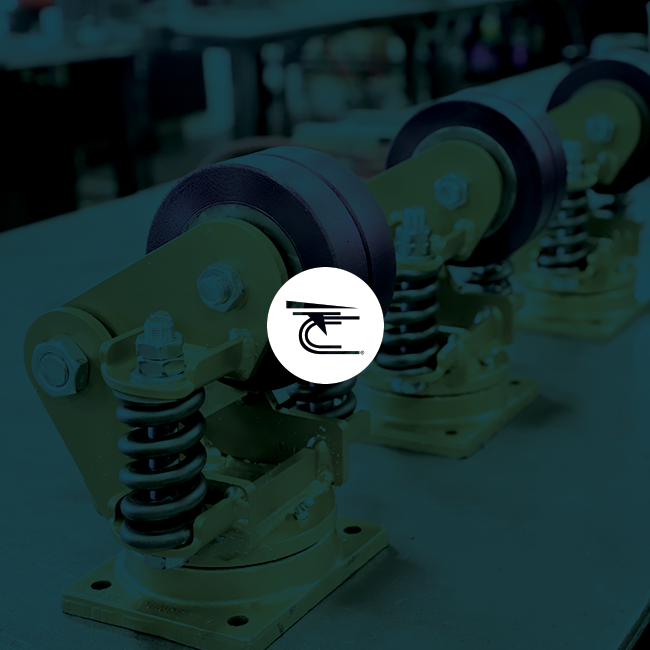

In this installment on industrial caster ergonomics, I’d like to discuss how different caster rigs can solve push/pull issues in the field.
Caster rigs, also called forks or swivel sections, come in three types. It’s very important to understand the forces impacting caster functionality when making application decisions. In my experience at Caster Concepts Inc., carts with 1000-2000 lbs. capacity, prevalent in the automotive industry, pose the most challenging push/pull issues.
First, I’ll summarize the three types of swivel sections.
• Kingpin swivel section – The oldest style caster, it’s assembled and tightened around a kingpin in the middle of the caster rig. It’s most appropriate for rough applications. For instance, with side-load issues, a kingpin caster is an option. However, if your concern is pushing the cart easily, a kingpin may not be your best choice.
• Kingpinless swivel section – Until recently, a kingpinless swivel was considered the solution for all ergonomic problems. A kingpinless caster swivels on ball bearings in a hardened raceway, which results in an efficient caster with good ergonomic properties. Preventative greasing is required to preserve the predicted life of this caster.
• Precision-sealed ball bearing swivel section – The newest concept on the market and a safety manager’s dream. The caster swivels around a precision-sealed ball bearing, which insures consistent performance. A major benefit is that it’s maintenance free, which extends caster life and keeps push/pull results consistent for the life of the caster.
Now, I’d like to discuss some common application errors I’ve seen in the field.
Undersized caster rigs, or rigs with inconsistent swivel, delight purchasing agents because they’re less expensive, but they negate any up-front savings by adding cost later. Over time, these undersized, imported casters become more difficult to push. This increases back injuries, and also means casters must be replaced more frequently. The best advice I can give when price is a concern is choose a caster that’s one size bigger than your application requires.
The second problem I see is inadequate swivel lead, meaning the distance between the center of the swivel section and the center of the wheel. Casters don’t work well when the swivel lead is too small.
When applications require push/pull, I suggest at least a 2.5 inch swivel lead. The longer swivel lead creates leverage, thus making the caster easier to move. One note: The swivel lead and caster capacity are inversely related. As swivel lead increases capacity decreases.
Our seasoned team of engineers will help you choose or adjust swivel lead, and pick the best caster rig for your application. At Caster Concepts, We Build Trust by employing engineers with expertise in ergonomic issues who recognize the uniqueness of each client situation.
The final installment of this series focuses on unique applications I’ve seen in the field and how they may be relevant to your manufacturing operation.
For further information please contact us at customercentral@casterconcepts.com or call 517-629-8838.
At Caster Concepts Inc., We Build Trust into every product we make. We will work with you to find the product that best fits your needs. Caster Concepts Inc. is an ISO 9001-2008 certified designer and manufacturer of a comprehensive line of industrial casters, ranging from a medium-duty series to a heavy-duty series for any application. CCI also manufactures caster wheels to withstand impact, corrosion, temperature extremes and chemicals found in harsh industrial environments. These multi-functional casters and wheels serve a variety of applications in the industrial, automotive, food service, aerospace, material handling and other demanding markets. Learn more about the entire family of Caster Concepts companies – Reaction Industries LLC, The Machine Center, Fabricating Concepts LLC, and Triple E Manufacturing, by visiting the most comprehensive web site in the caster industry at https://www.casterconcepts.com/